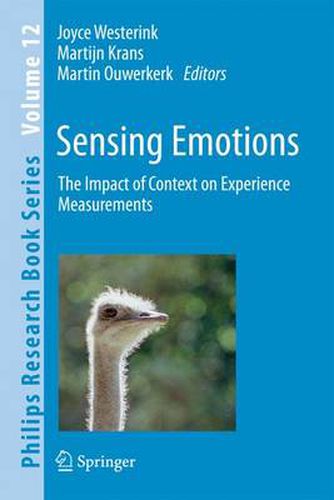Readings Newsletter
Become a Readings Member to make your shopping experience even easier.
Sign in or sign up for free!
You’re not far away from qualifying for FREE standard shipping within Australia
You’ve qualified for FREE standard shipping within Australia
The cart is loading…






This title is printed to order. This book may have been self-published. If so, we cannot guarantee the quality of the content. In the main most books will have gone through the editing process however some may not. We therefore suggest that you be aware of this before ordering this book. If in doubt check either the author or publisher’s details as we are unable to accept any returns unless they are faulty. Please contact us if you have any questions.
The authors of this book analyze the influence of specific everyday life situations and contexts on the emotional state of people and the ways in which this can impact measurements of user experience. The book anticipates a future in which products and machines know how we feel and adapt to the feelings they sense (music systems that effectively enhance our current mood with a personalized choice of music, computer dialogues that avoid upcoming frustration, and photo cameras that take pictures whenever we’re excited). In all these situations, knowledge of the emotional state of the user is prime information.
A previous book published in the Philips Research Book Series, Probing Experience , illustrated ways to evaluate the user experience through behavioural and physiological parameters. The present book focuses on the influence of context in these measurements. The everyday-life contexts of future products and machines will be always specific, especially in comparison to the standard laboratory situation. Context can impact the experience measurements and influence the occurrence and characteristics of certain signals. On the other hand, independent knowledge of the context could be very valuable for the interpretation of experience measurements. This book provides an overview of the present knowledge on the impact of context, and advocates the need for a joint understanding of its role in the measurement of experience.
The authors comprise many experienced researchers on this topic with a wide variety of backgrounds, including business and academia, covering a broad range of context situations.
$9.00 standard shipping within Australia
FREE standard shipping within Australia for orders over $100.00
Express & International shipping calculated at checkout
This title is printed to order. This book may have been self-published. If so, we cannot guarantee the quality of the content. In the main most books will have gone through the editing process however some may not. We therefore suggest that you be aware of this before ordering this book. If in doubt check either the author or publisher’s details as we are unable to accept any returns unless they are faulty. Please contact us if you have any questions.
The authors of this book analyze the influence of specific everyday life situations and contexts on the emotional state of people and the ways in which this can impact measurements of user experience. The book anticipates a future in which products and machines know how we feel and adapt to the feelings they sense (music systems that effectively enhance our current mood with a personalized choice of music, computer dialogues that avoid upcoming frustration, and photo cameras that take pictures whenever we’re excited). In all these situations, knowledge of the emotional state of the user is prime information.
A previous book published in the Philips Research Book Series, Probing Experience , illustrated ways to evaluate the user experience through behavioural and physiological parameters. The present book focuses on the influence of context in these measurements. The everyday-life contexts of future products and machines will be always specific, especially in comparison to the standard laboratory situation. Context can impact the experience measurements and influence the occurrence and characteristics of certain signals. On the other hand, independent knowledge of the context could be very valuable for the interpretation of experience measurements. This book provides an overview of the present knowledge on the impact of context, and advocates the need for a joint understanding of its role in the measurement of experience.
The authors comprise many experienced researchers on this topic with a wide variety of backgrounds, including business and academia, covering a broad range of context situations.